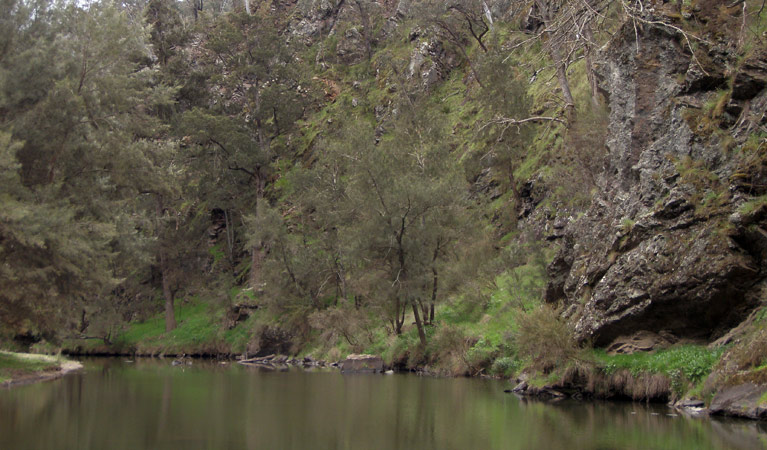The Beach
Abercrombie River National Park
Overview
The Beach, near Oberon, is a secluded place to camp by the Abercrombie River. Accessible only by 4WD, it’s perfect for touring, swimming and relaxing.
| Number of campsites | 3 |
|---|---|
| Camping type | Tent, Camper trailer site, Camping beside my vehicle |
| Facilities | Barbecue facilities, toilets |
| What to bring | Drinking water, cooking water, firewood |
| Price | There are no camping fees at this campground but a $6 booking fee applies. |
| Group bookings | Book up to 20 people or 5 sites online. For larger groups, make a group booking enquiry. |
| Please note |
|
Looking for somewhere well away from everyone else to take the family for a few days break? The Beach – not surprisingly, given the name – is a campground on a stretch of sand by the water. Shaded by casuarinas, it’s sheltered by a wall of rock deep in the valley.
It’s a short stroll upstream from the campground to a deep waterhole that’s great for swimming. Take the opportunity while you’re here to explore Abercrombie River National Park in your 4WD or bring your mountain bike if you’re feeling energetic – the fire trails are rarely used, so are perfect for keen cyclists.
Wallabies and kangaroos are often seen hanging around The Beach and, although sightings are never guaranteed, platypuses live in waterholes along the river. They’re best spotted either as the sun rises or sets. If you’re here during spring – a beautiful time to visit Abercrombie River – look for the pretty yellow and red pea flowers (also called bacon and egg flowers) and the beautifully scented white blooms of the tea tree.
Map
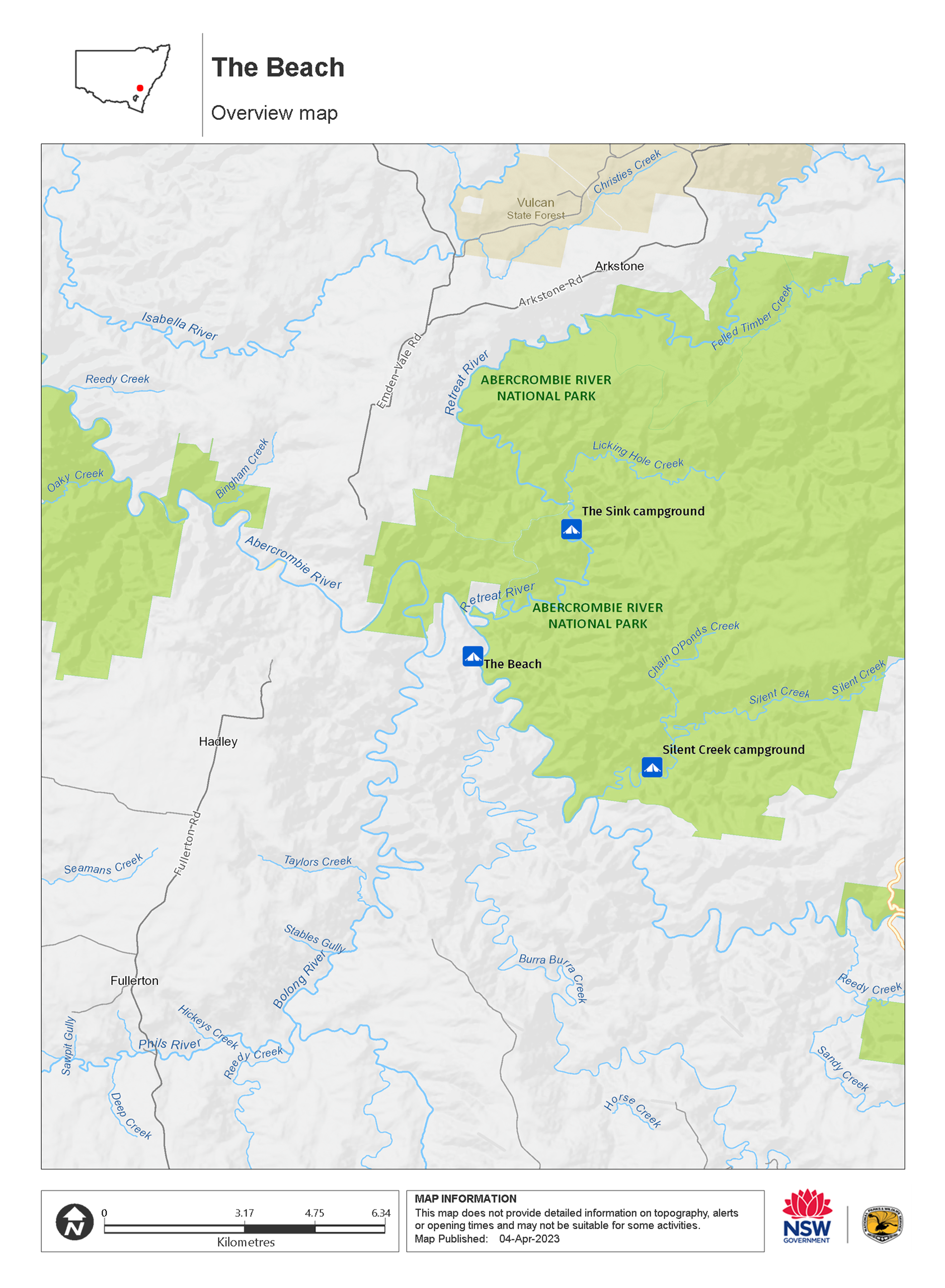
Map legend

Local alerts
For the latest updates on fires, closures and other alerts in this area, see https://uat.nswparks.cloud/camping-and-accommodation/campgrounds/the-beach/local-alerts
Bookings
- National Parks Contact Centre
- 7am to 7pm daily
- 1300 072 757 (13000 PARKS) for the cost of a local call within Australia excluding mobiles
- parks.info@environment.nsw.gov.au
Operated by
- Oberon office
- Monday to Friday, 9am to 4.30pm.
- 02 6336 6200
- npws.kanangra@environment.nsw.gov.au
- 38 Ross Street, Oberon NSW 2787
Park info
- in Abercrombie River National Park in the Sydney and surrounds and Country NSW regions
Abercrombie River National Park is always open but may have to close at times due to poor weather or fire danger.
Visitor info
All the practical information you need to know about The Beach.
Maps and downloads
Learn more
The Beach is in Abercrombie River National Park. Here are just some of the reasons why this park is special:
Aboriginal culture
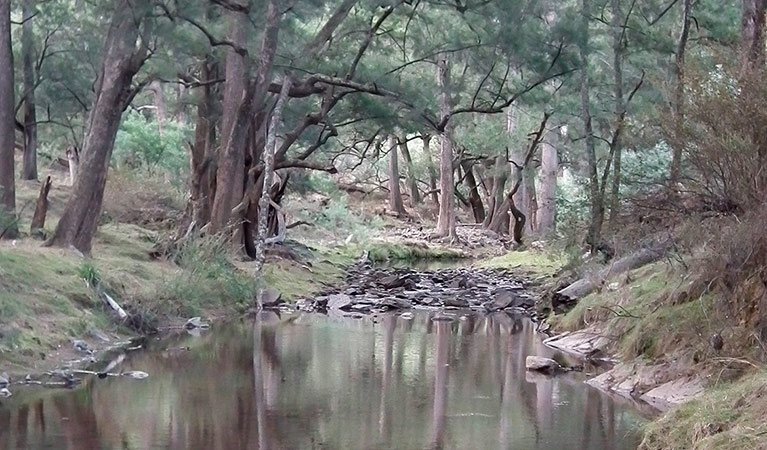
The ridgelines and rivers running through Abercrombie River National Park were once traditional travel and trading routes for the Wiradjuri and Gundungarra People. Evidence of open campsites can be found along the rivers and creeks in the park.
Action-ready
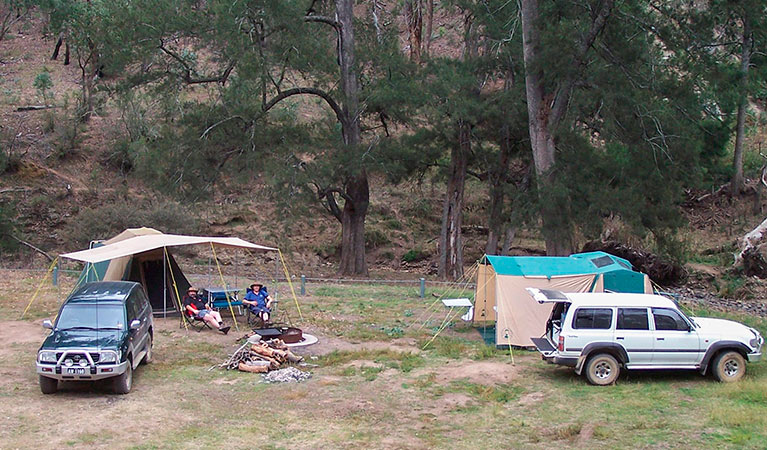
This is an environment built for adventure. One of the most popular activities in the park is 4WD touring. Some of the trails running along gorges and ridges can be pretty challenging, even for the experienced driver. For those with plenty of energy, you can also explore these trails on a mountain bike. The rivers and creeks, shaded by tall casuarinas, have plenty of deep waterholes. Pull on your swimmers and jump on in. Or perhaps you’ve got a canoe or kayak – bring it along because there are some good stretches for paddling.
Gold standard

Landscapes of deep gullies with rivers running through them – such as the one found at Abercrombie River – provide ideal conditions for loose gold. During the gold rush of the second half of the 1800s, the precious mineral was discovered here. Following the rivers and creeks you can find evidence – sluices and diggings – still there today.
Wild kingdom
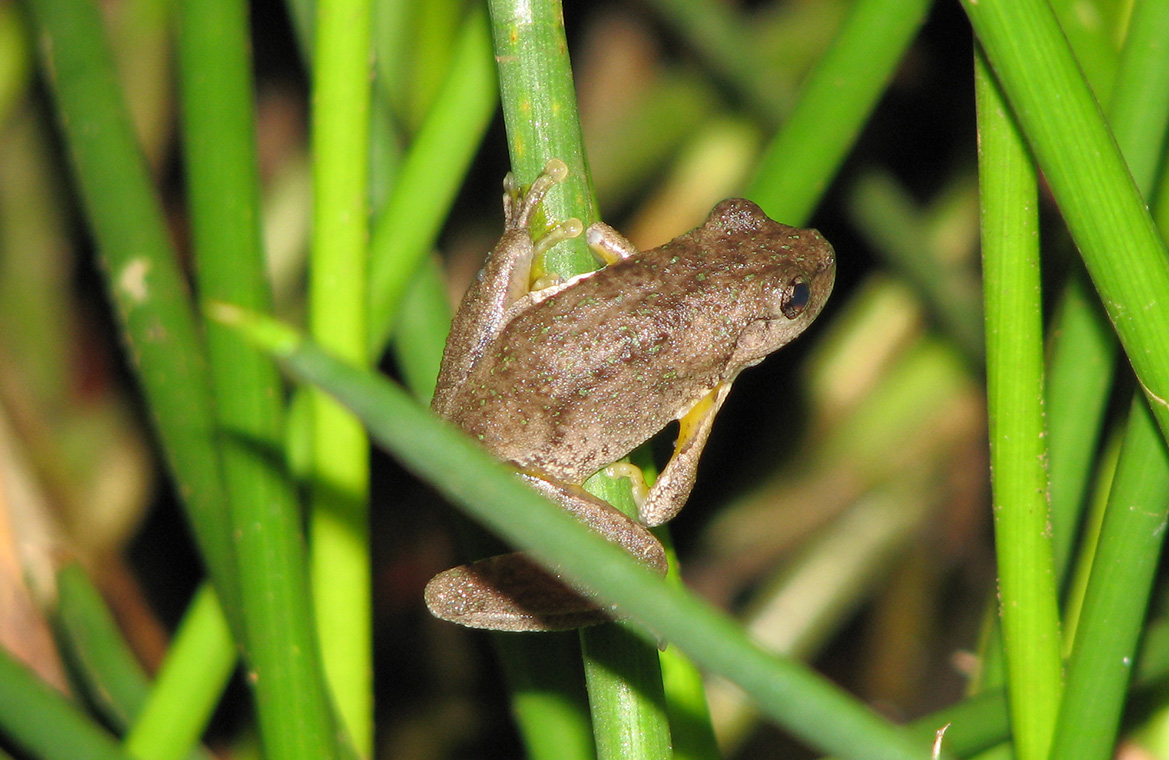
All year round, this is a great spot to observe local wildlife. Kangaroos, wallabies and emus are seen throughout the park, and echidnas and wombats live on the slopes and river flats. The rivers and creeks are home to eastern water dragons and the shy platypus. In summer, you’ll hear the sound of frogs calling out near the creeks. There are also more than 60 species of birds around here – look for wedge-tail eagles soaring above Abercrombie trail.
Plants and animals protected in this park
Animals
-

Swamp wallaby (Wallabia bicolor)
The swamp wallaby, also known as the black wallaby or black pademelon, lives in the dense understorey of rainforests, woodlands and dry sclerophyll forest along eastern Australia. This unique Australian macropod has a dark black-grey coat with a distinctive light-coloured cheek stripe.
-

Bare-nosed wombat (Vombatus ursinus)
A large, squat marsupial, the Australian bare-nosed wombat is a burrowing mammal found in coastal forests and mountain ranges across NSW and Victoria. The only other remaining species of wombat in NSW, the endangered southern hairy-nosed wombat, was considered extinct until relatively recently.
-

Common ringtail possum (Pseudocheirus peregrinus)
Commonly found in forests, woodlands and leafy gardens across eastern NSW, the Australian ringtail possum is a tree-dwelling marsupial. With a powerful tail perfectly adapted to grasp objects, it forages in trees for eucalypt leaves, flowers and fruit.

